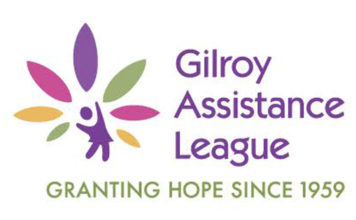As of Sept. 1, those in the Santa Clara County who receive subsidies from the government’s Section 8 voucher program will be required to put 35 percent of their income toward rent – a 5 percent increase from the subsidy that has been in place for decades.
Dee, an 80-year-old recipient of Section 8 who wished only to be referred to by her first name, said the total monthly rent for her one bedroom and one bathroom apartment at Village Green of Gilroy is $1,009 – nearly 60 percent of which has previously been covered by the government.
Now, Dee’s contribution to rent for the apartment she has been living in for seven years has climbed to $463, a significant $100 increase from the prior cost.
“When I heard the news about the cuts, it floored me,” Dee said, downtrodden by the situation. “I don’t know what I am going to do.”
After paying the newly implemented increase in her rent, Dee, who lives on Social Security, said she will only have $300 to live on per month and is distressed she will no longer have sufficient funds to cover the costs of her groceries and prescriptions.
A result of $85 billion in nationwide sequestration cuts, the U.S. Department of Housing and Urban Development (HUD) has cut $21 million from the Housing Authority of the County of Santa Clara’s (HACSC’s) Section 8 program funding for 2013. Unless there is a compromise in Washington, the sequester cuts are set to continue over a 10-year period.
This means 17,000 seniors, extremely low-income veterans, the disabled, low-income families and the formerly homeless in the county will struggle to make ends meet and 25,000 households will remain frozen on the wait list.
“The subsidy has been set at 30 percent since the 1970s,” said Alex Sanchez, executive director of the HACSC. “Congress has resisted for as long as they could.”
Sanchez said the last time the HACSC opened up the waitlist for Section 8 was in 2006 for five days. During that short time period, more than 70,000 applications were submitted.
“Imagine that we only get about 30 turnovers per month while we receive thousands of new applicants to the waitlist,” Sanchez said. “The turnover rate is close to nothing in comparison to the applications.”
Throughout the summer, the HACSC has held meetings at various locations in the county in an effort to inform Section 8 recipients of options they have to help overcome challenges they may face due to the cuts.
According to Dee, a meeting was held in early August at Village Green and nearly 100 people from primarily Gilroy, San Jose and Sunnyvale areas were in attendance.
“I went to the Housing Authority meeting in hopes of getting help from them, but instead they were asking us for help,” Dee said, astounded by suggestions she heard at the meeting to utilize food bank services and assistance available from local nonprofits such as St. Joseph’s Family Center.
Dee said she has been receiving the Section 8 subsidy for approximately nine years, beginning when she lived in the Stanislaus County. She noted that she came to Gilroy seven years ago to be closer to some of her family members who live in the area. One of the major reasons she picked Village Green was because they accepted Section 8.
“The housing subsidy used to be a wonderful thing,” Dee said. “I now find myself in a precarious situation.”
Dee said she knows other Village Green residents are as worried as her about not being able to afford the extra rent. She said many are too embarrassed to even talk about it because they don’t want their more affluent neighbors to know they live below the poverty line.
According to the results of the HACSC’s 2013 Housing Needs Assessment for Santa Clara County, which were published in July, the demand for affordable housing is growing in the county at a time when the federal government is reducing funding for Section 8. The population is increasing while lower income households face significant challenges to achieving financial self-sufficiency.
With the disparity between the cost of living in Santa Clara County and extremely low income residents, the cuts will likely move households that are “scraping by” to move to a lower cost area or join the growing ranks of the homeless, according to HACSC.
According to a press release from Second Harvest Food Bank, nearly half of all seniors living in Silicon Valley are struggling to get by economically.
“The high cost of living in Silicon Valley is hurting many of our neighbors, particularly seniors who are living on fixed incomes,” said Kathy Jackson, CEO of Second Harvest Food Bank of Santa Clara and San Mateo counties. “As the economy continues to rebound here in Silicon Valley, housing and other costs are rising, making it even more difficult for seniors. In this region known for wealth and abundance, those who are most vulnerable, including seniors, shouldn’t have to worry about where they will get their next meal.”















